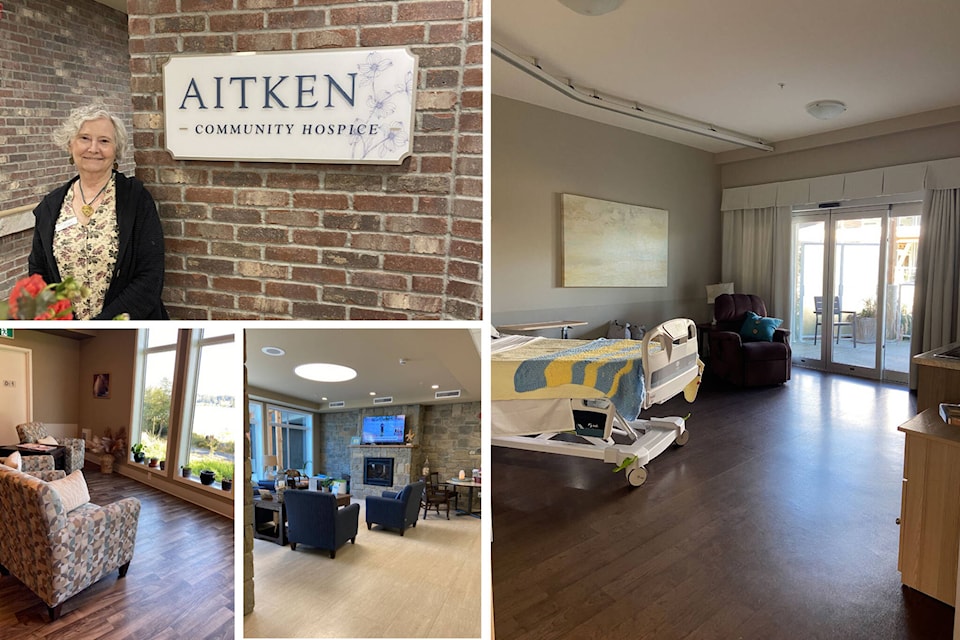Accepting that death is growing imminent for ourselves or a loved one is never easy, but the benefits of doing so can be transformative.
“I think we’ve all grown up being afraid of death and talking about death but we all end up there,” reflects Jane Sterk, executive director of Comox Valley Hospice Society.
“There are so many magical things that can happen when someone comes into Hospice,” she says. “They can talk about their hopes, dreams and passions, they become whole people again, not only the thing they are dying of.”
From palliative care to hospice care
When a patient is diagnosed as palliative, it means they’re not in active treatment for a cure, and care turns to keeping them comfortable. They could be in palliative care for weeks or years, depending on the disease.
However those who are admitted to the Aitken Community Hospice care understand that death will likely come within 90 days, and care becomes focused on the best way to support them and their loved ones through that final journey, Sterk explains.
What that looks like is different for everyone.
Hospice care can happen at home, in the hospital or long-term care, or at the new purpose-built Hospice facility, where six private rooms provide a home-like environment for patients. Once in Hospice, all patients continue to benefit from the care of their own family physician, and they are also supported by the Ocean Front Village hospice team of specially trained nurses, Island Health’s palliative team and Comox Valley Hospice Society’s counsellors and volunteers.
For many patients, care may begin at home, but shift to Hospice if pain or symptoms become too difficult to manage, or if the caregiver becomes too physically and emotionally exhausted to continue around-the-clock care. Because only six beds are available, not everyone that could benefit from being in Hospice can be accommodated. A team from Ocean Front Village, Island Health and Comox Valley Hospice Society assess those referred to Hospice and, when a room becomes available, patients are triaged based on their unique situation.
Admission to Hospice can be meaningful for both the patient and their loved ones, Sterk says. One man became quite philosophical during his time at Hospice and enjoyed engaging in meaningful conversations about his life and approaching death.
Another woman had been caregiver to her 50-year-old palliative son, and entering Hospice meant their relationship became one of mother and son again, rather than patient and caregiver.
“Hospice care transforms our thinking about life and death,” Sterk says. “It really is a gift.”
Support Hospice care in the Comox Valley
As a non-profit society, Comox Valley Hospice relies on the generosity of the community to provide these vital services.
Beyond direct donations, the new facility also brings several hospice room naming opportunities, available for a $125,000+ donation, along with another for the family lounge at the $250,000 level. All are available to an individual, family or organization – to learn more, contact Jane Sterk at
Also coming up is the Phantom Ball year-end fundraiser with some exciting draws to be made weekly throughout December and major prize draws on New Year’s Eve.
To learn more about the Comox Valley Hospice Society and hospice care in the Comox Valley, visit comoxhospice.com
READ MORE: ‘Life-affirming and transformative:’ Compassionate giving provides vital end-of-life-care
READ MORE: Comox Valley welcomes brand new community hospice
